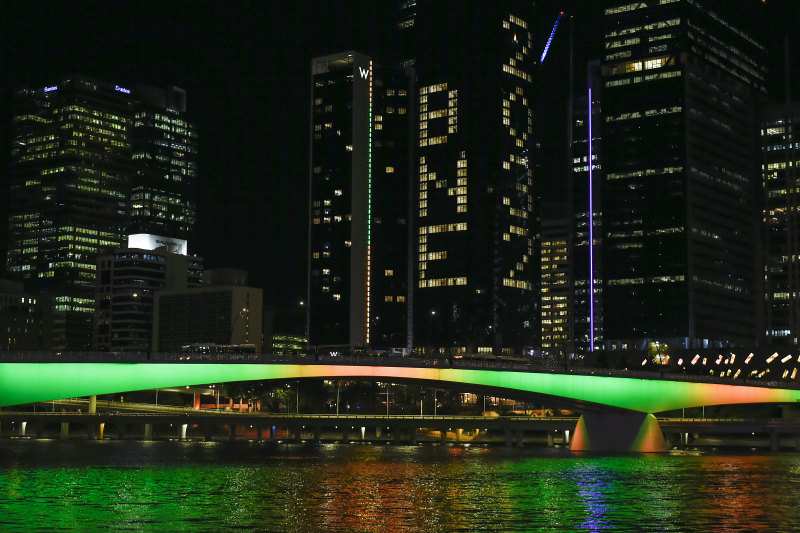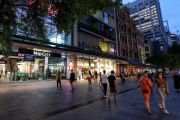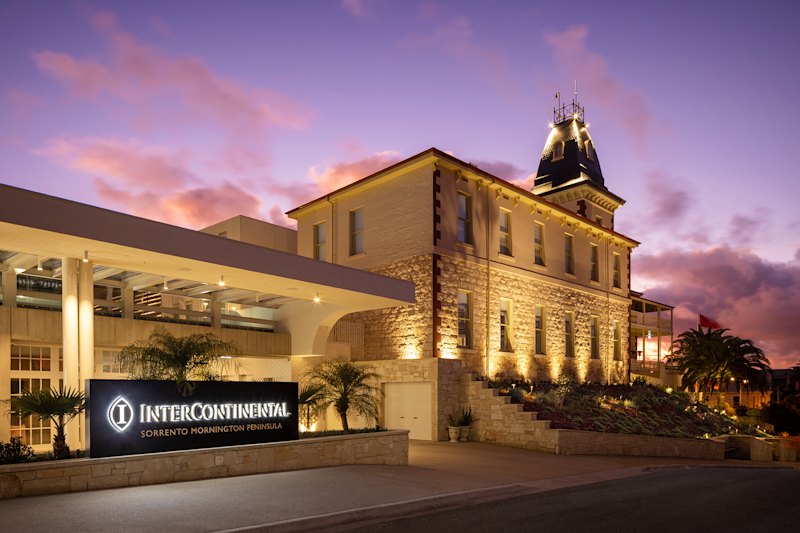
Why builders in Brisbane are earning more than any other city
A surge in infrastructure work to prepare for the 2032 Olympic Games has given Brisbane the country’s highest hourly construction rate, which will only rise if regional labour constraints don’t ease, quantity surveying firm Turner & Townsend warns.
The Queensland capital recorded an average construction rate of $US66.66 ($99.80) an hour, putting the city’s migrant-dependent construction sector ahead of Sydney’s $US65.32 and Melbourne’s $US64.31, the consultancy’s International Construction Market Survey 2023 shows.
It is not the most expensive city in which to build – Brisbane’s average total cost of $US2561 ($3834) per square metre is lower than Sydney’s $US2951 and Perth’s $US2633 – but the city was at risk of taking the top place, Turner & Townsend property head Matt Billingham said.

“The volume of work hitting the Queensland market over the next few years is going to continue to push demand up,” Mr Billingham told The Australian Financial Review.
Having the nation’s highest hourly costs will be unwelcome news for the Brisbane as it gears up to host the world’s biggest sporting event.
The state government and local organisers say the capital-light nature of plans, with an ethos of reusing existing infrastructure as much as possible, will keep the final bill down for the 2032 Games, despite a pattern of Olympic cost blowouts since the 1960s.
Regional councils will also shoulder much of the development, meaning it won’t all be concentrated in one area, as it was for the Sydney Games in 2000.
But in a city where planning constraints are holding the back development of much-needed new housing, the volume of work and a failure by public sector clients to co-ordinate tenders could result in Brisbane overtaking Sydney to become the most expensive place to build, Mr Billingham said.
“If trends continue in the direction they are, that could happen,” he told The Australian Financial Review.
“You’ve got all the Cross River Rail currently happening. There’s a series of precincts planned around some of those new transport nodes. Boggo Road and Albert Street are significant projects that are going to be coming to market over the next few years.”
Direct Olympic-related expenditure will also be significant. Queensland has committed $2.7 billion for a major redevelopment of the Gabba cricket ground – nearly triple the state government’s original $1 billion budget for a flagship venue.
The federal government will put in $2.5 billion for a new 17,000-seat Brisbane arena development in the Roma Street precinct, and 16 new or upgraded venues will get close to $1.87 billion in co-funding split equally between the two tiers of government.
An all-too-common lack of co-ordination between public sector clients posed a key inflationary risk, Mr Billingham said.
“Rather than a glut of projects in the market at the same time, creating a big spike in demand where supply doesn’t necessarily increase … it would be better if government departments spoke to one another about the timing of projects,” he said.
Higher costs were also increasingly prompting private sector developers – with strict return hurdles – to hold back on new projects, he said.
“It makes it more challenging for private investors,” Mr Billingham said.
Sydney, which rose back above Perth following a spike in the supply-demand imbalance in the WA capital, had a large pipeline of work under way, but Brisbane needed capacity – particularly in the form of skilled migrants – to deliver its pipeline of work without suffering “over demand,” Mr Billingham said.
The report that listed New York as the most expensive city in the world to build, at a cost of $US5451 per square metre, said the extreme inflation of the past couple of years had eased, but high levels of domestic public spending remained a threat to inflation generally in the Australian construction market.
“Shipping timeframes and costs are now mostly back to pre-pandemic levels,” Mr Billingham said.
“We expect to see some cooling across sectors that are consumer-driven, as households grapple with high cost-of-living pressures and higher interest rates. On the other hand, public sector spending remains robust and there is a significant pipeline of major projects to be delivered around the country, which will keep markets buoyed. Private sector investment in data centres is also experiencing increased activity.”











